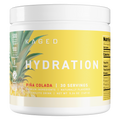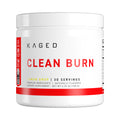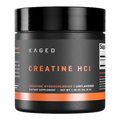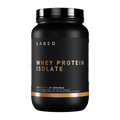The tradition of making New Year’s Resolutions dates back to the ancient Babylonians and Romans, and has been consistently practiced right through to today. One of the most commonly set resolutions is to lose weight. Unfortunately, many resolutions fail in the first six weeks of the year. If your resolution is to lose weight, here’s a New Year’s Weight Loss Checklist to help you reach your goal.
New Year’s Weight Loss Checklist Item #1: Follow a caloric restrictive diet
There are many approaches when it comes to losing weight, but the common denominator among them all is the need to be in a caloric deficit. A study was done on overweight adults who underwent a 14-week weight loss intervention. The participants were told to monitor and document an energy deficit of 500 calories per day. At the end of the study, researchers noted that individuals who averaged a caloric deficit over 500 calories per day lost four times as much weight compared to the individuals whose average caloric deficit was less than 500 calories per day.[1]
Practical Application: Create a realistic caloric deficit based off your total daily expenditure and track your progress.
New Year’s Weight Loss Checklist Item #2: Find your ideal macronutrient breakdown
The internet is overflowing with “experts” arguing about the superiority of one diet over another. However, clinical studies and anecdotal evidence show that a wide range of diets are effective. A study examined 811 overweight subjects over the course of two years to see if there were any benefits for a diet that emphasized protein, fat, or carbohydrates. The subjects were divided into four groups consisting of similar foods, but different macronutrient breakdowns as follows: Group 1 (20% fat, 15% protein, and 65% carbohydrates), Group 2 (20% fat, 25% protein, and 55% carbohydrates), Group 3 (40% fat, 15% protein, and 45% carbohydrates), and Group 4 (40% fat, 25% protein, and 35% carbohydrates). At the end of the study, researchers noted that weight loss was similar among the four groups.[2]
Practical Application: Keep track of your daily caloric intake and focus on eating nutrient dense foods in a macronutrient breakdown that works for you.
New Year’s Weight Loss Checklist Item #3: Utilize both resistance training and aerobic exercise
Both resistance training and cardiovascular training have been shown to be effective factors for weight loss alongside a calorie restrictive diet. A 12-week study compared the weight loss effects of aerobic exercise, resistance training, or a combination of the two among 64 subjects. The participants were divided into four groups for the study: a control group, an aerobic exercise group, a resistance training group, and an aerobic exercise with resistance training combination group. At the end of the study, the researchers noted that the combination group saw significant reductions in both body weight and body fat compared to the other groups.[3]
Practical Application: Follow one of our video trainers which combines resistance training and cardio to maximize your results.
New Year’s Weight Loss Checklist Item #4: Get NEATer this New Year
NEAT (Non-Exercise Activity Thermogenesis) is a term for the daily caloric expenditure we get from the daily activities we perform, such as walking or fidgeting. While the majority of weight loss advice focuses on diet and exercise, NEAT is an underrated component which shouldn’t be neglected. Depending on factors such as an individual’s basal metabolic rate, body weight, and daily activity, it’s possible to burn up to an extra 2000 calories a day from high NEAT activities.[4]
Practical Application: Increase your daily NEAT by parking a few spaces further or opting for the stairs over the elevator.
New Years Weight Loss Checklist Item #4: Boost your metabolism with thermogenics
Thermogenics increase heat through metabolic stimulation, and this increased heat production results in extra calories burned by the body. Some potent thermogenics that are known to be effective in humans include green tea and capsaicin. A study investigated the effects of green tea extract on energy expenditure and fat oxidation in humans over a 24-hour time span. Relative to the placebo group, the group that supplemented with green tea extract saw an increase in energy expenditure and a significant increase in fatty acid oxidation.[5] In a double-blind placebo-controlled study, 20 healthy subjects who ingested 100 mg Capsimax (2 mg capsaicinoids) showed significant increases in free fatty acids in their blood post-ingestion and after exercise—indicating the breakdown of fat.[6] Another ingredient worth considering is L-Carnitine. L-Carnitine plays a key role in transporting long-chain fatty acids across the mitochondrial membrane to help break down fat and generate energy.
Practical Application: A serving of Clean Burn delivers an effective dose of green tea, capsaicin, and L-Carnitine to help boost your thermogenesis.
This year, Kaged Muscle wants you to be successful with your resolution to lose weight and improve your fitness. Make all four of these items part of your plan and you’ll be well on your way to hitting your goals.
References:
[1] Carels, R. A., Young, K. M., Coit, C., Clayton, A. M., Spencer, A., & Hobbs, M. (2008). Can following the caloric restriction recommendations from the Dietary Guidelines for Americans help individuals lose weight? Eating Behaviors, 9(3), 328-335. doi:10.1016/j.eatbeh.2007.12.003
[2] Nieman, D. (2010). Comparison of Weight-Loss Diets with Different Compositions of Fat, Protein, and Carbohydrates. Yearbook of Sports Medicine, 2010, 196-197. doi:10.1016/s0162-0908(09)79506-6
[3] Ho, S. S., Dhaliwal, S. S., Hills, A. P., & Pal, S. (2012). The effect of 12 weeks of aerobic, resistance or combination exercise training on cardiovascular risk factors in the overweight and obese in a randomized trial. BMC Public Health, 12(1). doi:10.1186/1471-2458-12-704
[4] Mccrady-Spitzer, S. K., & Levine, J. A. (2012). Nonexercise activity thermogenesis: A way forward to treat the worldwide obesity epidemic. Surgery for Obesity and Related Diseases, 8(5), 501-506. doi:10.1016/j.soard.2012.08.001
[5] Dulloo, A. G., Duret, C., Rohrer, D., Girardier, L., Mensi, N., Fathi, M., . . . Vandermander, J. (1999). Efficacy of a green tea extract rich in catechin polyphenols and caffeine in increasing 24-h energy expenditure and fat oxidation in humans. The American Journal of Clinical Nutrition, 70(6), 1040-1045. doi:10.1093/ajcn/70.6.1040
[6] Bloomer et al. Effect of oral intake of capsaicinoid beadlets on catecholamine secretion and blood markers of lipolysis in healthy adults: a randomized, placebo controlled, double-blind, cross-over study. Lipids Health Dis 2010, 9:72































